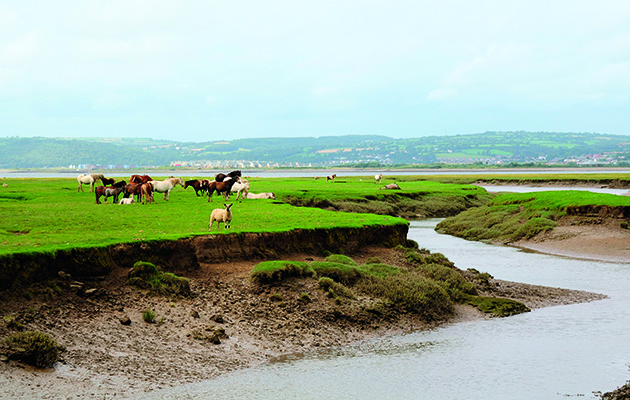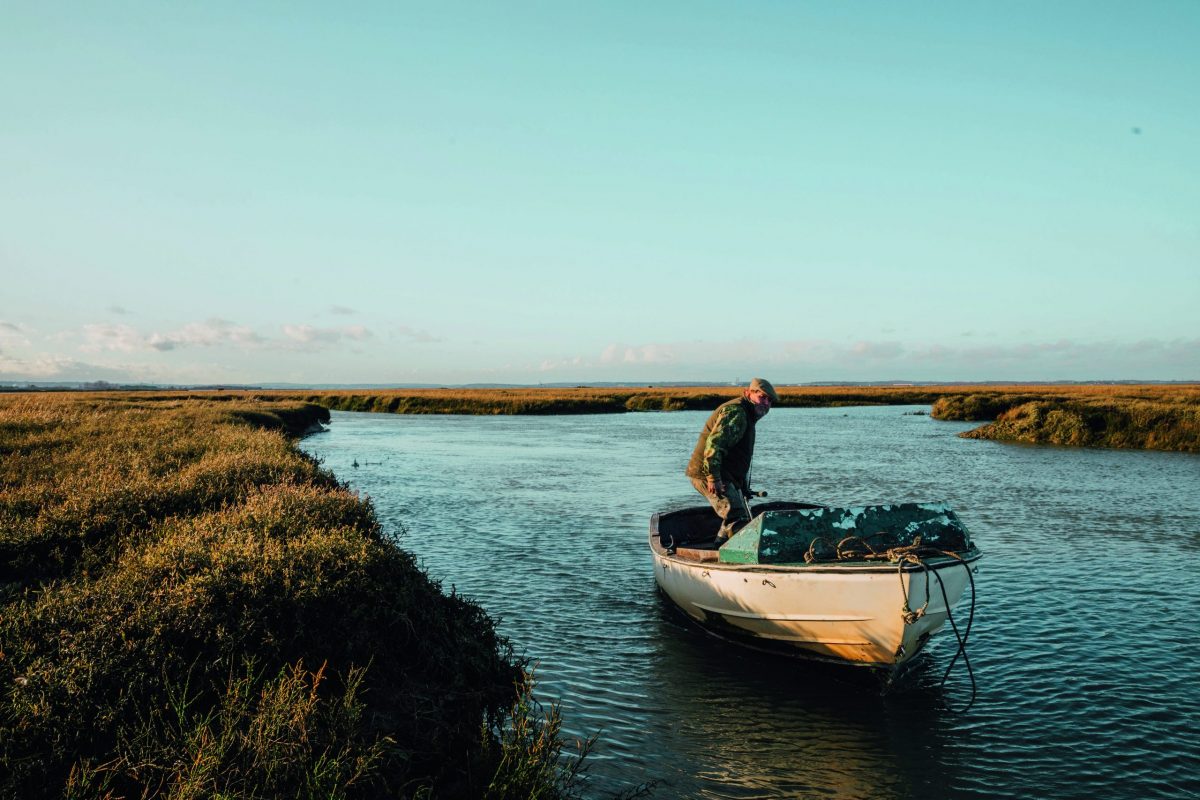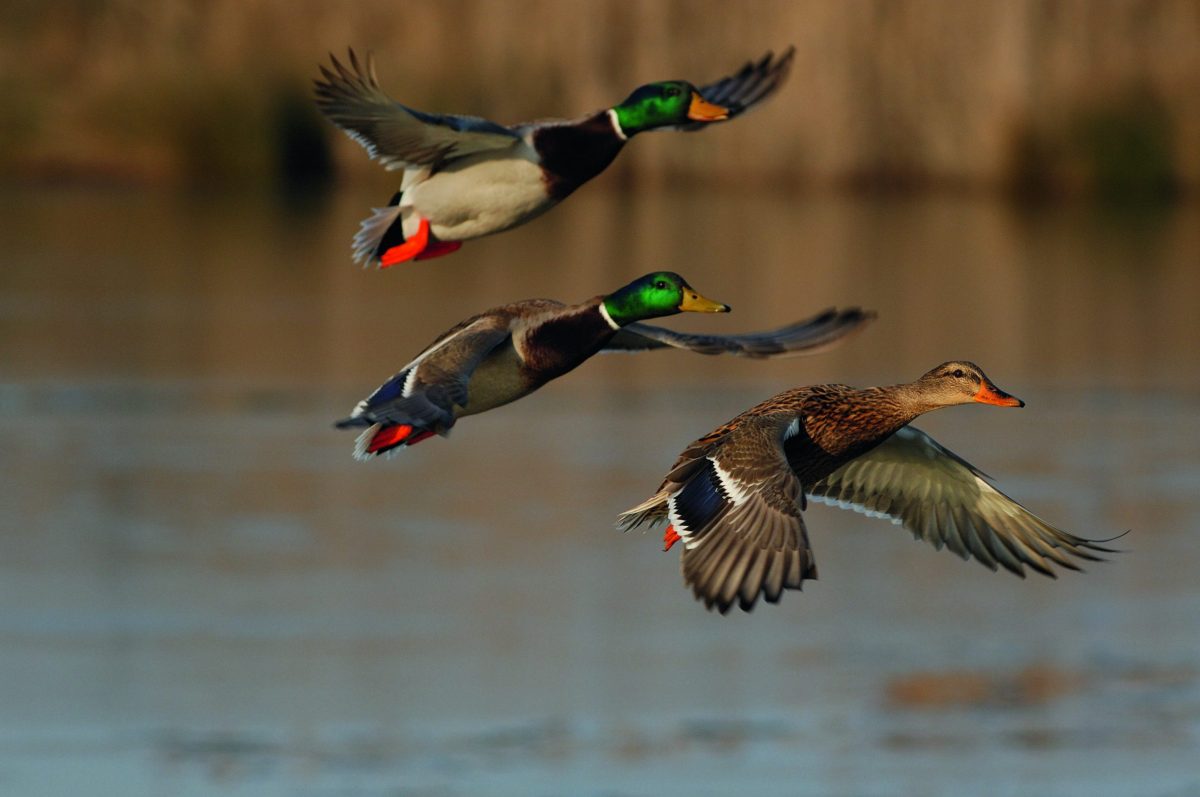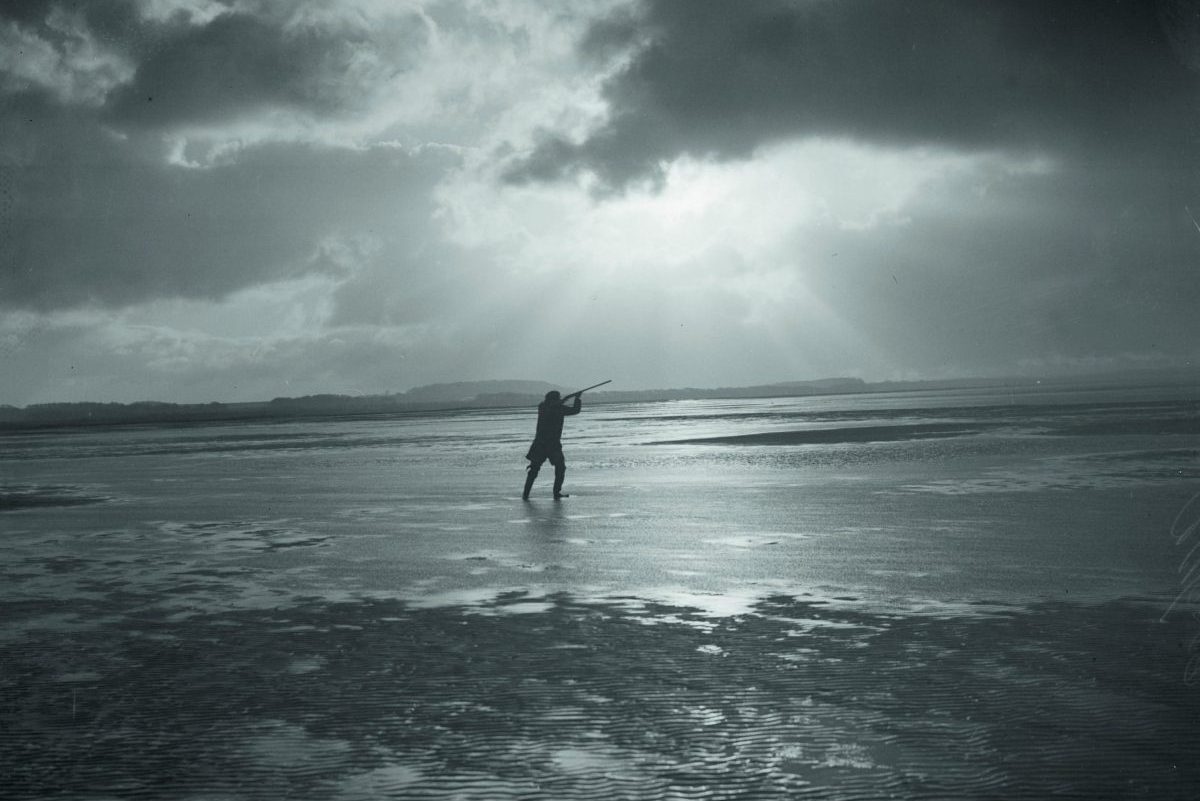An evening flight of greylag in West Wales
Mike Swan heads for an evening flight of greylag in West Wales, but with 10m tides in the Bristol Channel, if he timed it wrong he would have to swim for it

Sheep and ponies watch the rising tide on Llanrhidian saltmarshes on the Gower peninsula
It was a still, bright October evening at Llanrhidian in West Wales, and Tom and I had decided to try for a shot at evening flight. Being in the outer reaches of the Bristol Channel, this is a coast of big tides, and at 10m in Swansea tonight’s tide was predicted to be one of the biggest of the year, with high water at bang on flight time.
With this much water the marsh would go right under, so we knew we had to be very careful where we went. If we predicted the tide height wrongly and got stranded, there would be no way out except by swimming.
I am proud to say that we got it just right, and the water reached a little over our knees as we stood in the high marsh rush beds. The cover they offered was not even waist-high, so we were pretty exposed, but by deep dusk, we would stand a reasonable chance of not being seen, and the mallard and teal often come to this spot at flight.

Greylag geese feeding on maize stubble
Past times remembered
The green of the lower saltings, grazed by ponies and sheep, was resplendent in the last rays of the setting sun, as the ever-growing tide spilled gently out of the creeks. It always fascinates me how what looks like a mile of dry land with just an odd channel through it becomes part of the sea in but a few moments.
Just at this moment, a van rolled into the spot where we had parked, and the two occupants proceeded to launch a canoe then paddled off into the sunset. Thank goodness they went the right way, for we did not need them close by to spoil our flight or even our tranquillity.
When I started wildfowling in this part of Wales, in the late 1970s, geese were a rarity. There were a few dark-bellied brent that wintered at the western end of the estuary, and once in a blue moon, usually on a frosty January night, you would hear some Siberian whitefronts from the regular wintering site in the Tywi valley as they flighted out to the coast. Since then the feral greylag population has grown and small skeins are a regular sight, though I have never had a shot at them.
Greylag music
On this particular evening, we were roused from our reverie soon after sunset, when we started hearing goose music away to the east. As it grew in volume, we made out the first distant skein, approaching from the east, and began to hunker down as best we could without squatting so low as to fill our boots.
It was all in vain, however, and the geese passed several hundred yards to the east, and far too high for a shot even if we had been under them. They went off inland, no doubt to graze on the pastures or stubbles of the Gower peninsula. In total there must have been at least 400, in three successive waves. What a spectacle! As they passed I mused on my old friend Peter Bond, who had a big hand in bringing the greylags back to south-west Wales. Back in the 1970s he farmed at Ferryside, along the tidal banks of the Tywi, and created a splendid wildfowl reserve beside the river.
His progress and success was regularly written up in the BASC (then Wildfowlers Association of Great Britain and Ireland, WAG BI) magazines, and it was in many ways his leadership that brought the greylags back. With his ground as a refuge and breeding site, and a no-shooting agreement with the local wildfowlers, the population slowly grew and spread.
Now, there are farmers who curse the feral geese, and I guess that even for a wildfowler there is something slightly more special about a winter migrant than a home-bred bird that is the offspring of reintroduction, but for me the greylag is a native that was pushed to the limit as a home-breeding species. Having grown up in the south, where geese were a hardly dreamed-of quarry, I cannot fail to look up and search every time I hear a call. I think that Peter and his fellows did a fine thing in bringing the geese back to the Burry Inlet, and if the odd farmer suffers a bit of crop damage, he can always try to shoot one.

Llanrhidian Marsh Bury Inlet, Gower, West Glamorgan South Wales
Call from the wild
As the dusk deepened, Tom and I stood on the alert, scanning the sky in all directions as with almost no wind, a duck could come from anywhere. But nothing came near us and we heard not a single quack. Then, just as we were about to head for home, there was goose music again. They were coming back out to the estuary!
The calling got louder and louder, and we really did begin to get excited because it sounded as though they were coming straight for us. With much less light now, and the waters dropping a little on the first of the ebb, we could squat low enough to be well hidden. In the end they slipped past us again, but this time the near-end of the skein was only about 100 yards away. Oh well.
It turned out that this was far from the only blank flight last season. Indeed, I fired not a single shot in the first eve. Even after the first success, there were several more blanks, and I guess that I shall in some senses remember the 2015 to 2016 season for the fact that there were so many.
Once upon a time I would surely have been frustrated by this, but I am more laid back as I mature. An evening in the wilderness like that is great recreation, and we did nothing wrong. If they had come over us and then we had missed, that would have been harder to take. But I shall remember that flight for many years to come, and I expect the future will hold some more blanks to savour along with it.








